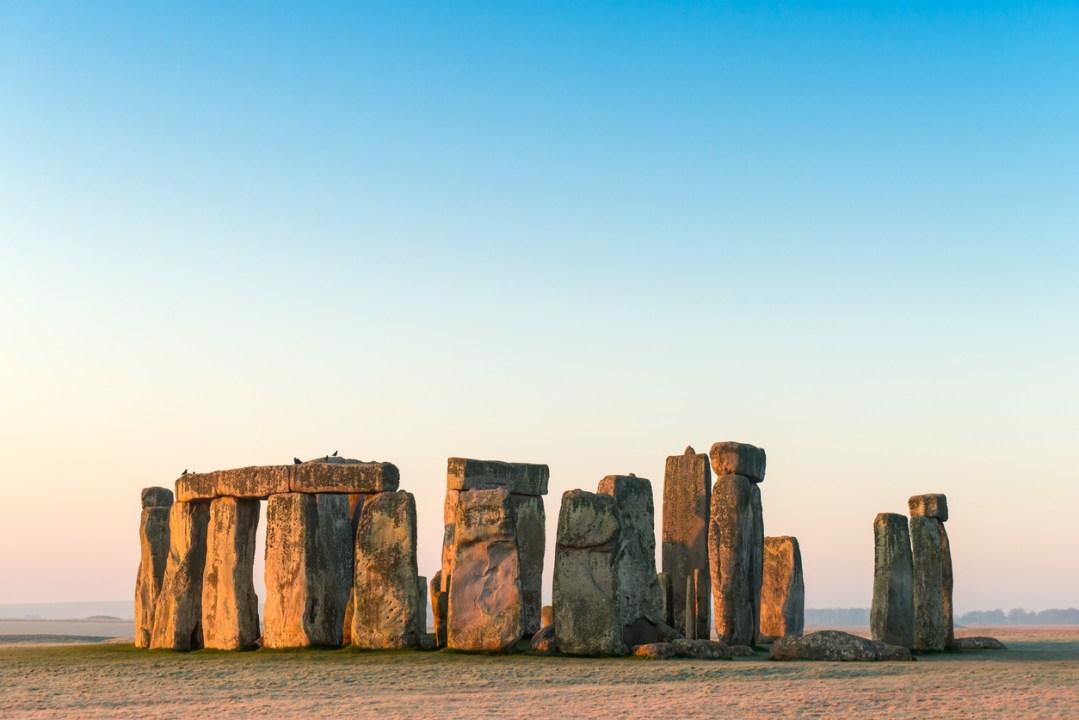I’ve had a keen interest in Stonehenge since I directed my first excavation there more than 40 years ago. A personal highlight was identifying a skeleton in London’s Natural History Museum, which archaeologists thought had been destroyed in the Blitz, and which turned out to be the remains of an Anglo-Saxon man beheaded beside the stone circle. Claims are made weekly, it seems, for some new insight into Stonehenge’s meaning, history or construction – and not all of them are mad. But I cannot remember an occasion when a single discovery changed the way I think about Stonehenge as much as the one announced this week.
I cannot remember an occasion when a single discovery changed the way I think about Stonehenge as much as the one announced this week.
A Nature study has found that Stonehenge’s Altar Stone was quarried in the far north-east of Scotland. Which means – depending on the route – it was carried as far as 800 miles before it was finally laid in Salisbury plain. The impressive study – which involved electron microscopes, lasers, and the geological aging of individual mineral grains in rock samples – could not be more clear cut. And geologists are convinced the stone was carried, rather than moved by an ancient glacier. It was Neolithic people who travelled all the way from the top of Scotland to the site of Stonehenge.
How did they do it? And why?
Let’s start at Stonehenge. What we call the Altar Stone was named in the 1620s by the architect Inigo Jones, who saw that it lay flat at the centre of Stonehenge, at the back of an arc formed by the tallest megaliths. In the 2020s we focus on how the midwinter sun sets between the tallest of these tall stones, casting its darkening light over the Altar Stone – or at least it would, if the stone was not largely buried, and further covered by two stones which fell and broke it on some distant, unrecorded day.
Archaeologists have tended to group Stonehenge’s megaliths into two categories. There are the really big ones, which are made of an extremely hard, local sandstone known as sarsen, which we think came from around 20 miles to the north; and there are the bluestones. Over decades, a determined team of British geologists, led by Richard Bevins at Aberystwyth University and Rob Ixer at UCL, has traced almost all the bluestones to various outcrops in south-west Wales, in a few cases to suspected Neolithic quarries. The origin of one bluestone, however, stumped them: the Altar Stone. Unlike the other bluestones, the Altar Stone is made of sandstone. Academics gradually eliminated all potential Welsh sources, until last year they proposed an origin in northern England or Scotland. This latest Nature study came about when an Aberystwyth colleague, Nick Pearce, responded to a request for some Welsh samples from an Australian PhD, and sent him two Altar Stone slides.
How did the Altar Stone travel all this distance? Weighing around six tons, it is a little heavier than the other bluestones, but it is lighter than most of the sarsens, which weigh as much as 40 tons. The latter can only have reached the site over land. So whatever mechanisms they used, Neolithic people would have had no trouble shifting the Altar Stone by land if they wanted to. A popular idea is that log rollers were used, as shown by a full-scale model at the Stonehenge visitor centre. They don’t work: rollers are impossible to control. I think people would have used the sophisticated technology of boat building to create strong sledges, which could be dragged with ropes and slid over loose branches to prevent sinking into the ground. For the very large sarsens, fixed timber tracks must be a real possibility.
The sea remains an option. They had the boats – their ancestors crossed the English Channel with cattle, sheep and pigs. Many pundits believe the Altar Stone was taken by sea, but for me the land route is the more credible option.
The clue is in the geography. Neolithic people didn’t travel as far as north-east Scotland to fetch a stone for Stonehenge: there were plenty of similar stones much, much closer. They went to make a point. The longer the journey took, and the more people who gave their labour to the project, the more successful it was. They went because it was so far. Because by doing so, they could meet other, distant communities. And because they wanted everyone to know what they were doing with Stonehenge. By moving the stone over land, you could get people involved. To have them see the stone go through their villages, to lean on the ropes as it did so, to mark the moment with feasting and celebrations.
This is what’s new about this Stonehenge revelation. This journey that reached right across the British Isles implies there was direct, physical communication between Neolithic communities across Britain. These were complex, networked societies in ways we are just beginning to understand.








Comments